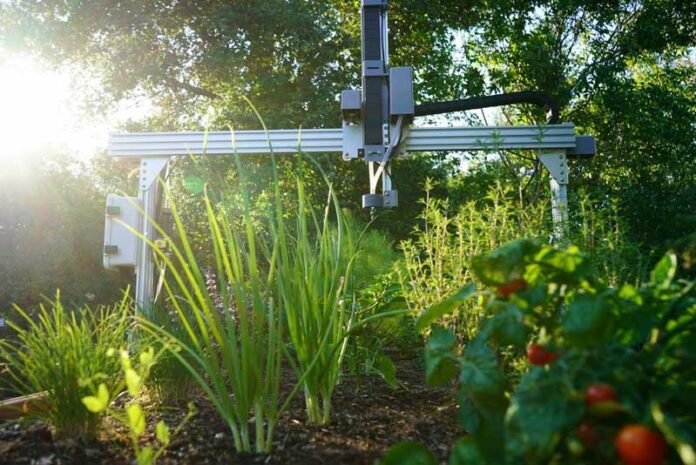There’s a new farmer in the cannabis industry — and it’s faster, smarter and sleeker, thanks to artificial intelligence.
From small-scale home systems that take the guesswork out of growing for beginners to commercial operations and predictive software, the technology has the ability to change how the world grows, sees and uses cannabis, from hemp and CBD to marijuana, along with the other crops we’re more accustomed to like cucumbers and tomatoes. But we aren’t jumping into the future just yet.
“Right now, it’s kind of an obscure topic,” said Nathaniel Morris, founder of William Bond Ai in Ontario, which uses AI to train machines to grow cannabis. “It’s not going to be obscure for long. [Cannabis] is going to be one of the first industries to be disrupted.”
Morris said AI imaging can find impurities in the plants, like mold, or a male plant that can impact the entire crop, better than the human eye, once trained to do so by an expert. The technology isn’t really new — but adapting it to fit the needs of cannabis growers is.
Morris uses the common agricultural robots from FarmBot, programming the devices to work specifically for cannabis. The technology is expensive, and often doesn’t make sense for many farmers growing like tomatoes or cucumbers. But with cannabis, which is legal and booming in Canada, the price point is just right, Morris told NJ Cannabis Insider.
Here in New Jersey, AI is playing little role in agriculture and robotics are scare, too, said Peter Furey, the executive director of the state Farm Bureau.
That’s due largely to prohibitive pricing and a steady supply of labor, said A.J. Both, an extension specialist in controlled-environment engineering with Rutger’s University’s New Jersey’s Agricultural Experimental Station.
“Eventually, it will come here, too,” Both said. “It’s a matter of time.”
For now, there’s some robotics in greenhouses, many of them have sophisticated control systems, allowing farmers to use their smartphones to get updates or updates throughout the day, he said.
That’s a similar method employed by Seedo, an Israeli-based company, sells hydroponic, automated grow boxes.
Customers can grow vegetables, herbs and cannabis, with medical cannabis coming in as the most popular, a spokesperson for the company said. That’s because growing at home gives customers more control over additives like pesticides and lowers costs.
To make that happen, there’s huge appeal in the AI component — Seedo is more than just a fancy, protective box with lights. The device monitors the plant and takes pictures, allowing it to identify changes in real time. It collects information on and controls temperature, humidity, water, lighting and nutrients.
And it’s all managed from a mobile app, which notifies the grower. Seedo sees this as the optimal way to grow. It’s only getting better as the company gleans data from its machines.
“The developments in AI helped Seedo become what it is now — a leader in accurate agriculture,” the spokesperson said. “The AI developments help Seedo truly optimize the entire grow process by processing data from our camera [and] sensors and thereby make the necessary changes to grow parameters.”
But AI isn’t just important in the growing process: Pot Bot is an app that makes personalized cannabis recommendations based on someone’s needs. It reads through medical journals and studies on cannabinoids, then pairs symptoms such as insomnia, asthma and cancer with branded marijuana strains to find type of weed is best suited to each.
And that could help build up the lack of research we’ve had so far on cannabis. Morris said studying cannabis in a lab hasn’t proved the best fit. It’s more effective, he said, to see how the full spectrum of cannabinoids impact users in their lives. Such a feat takes a lot of data, but AI could be the tool we need.
“Artificial intelligence is the first time we’ve had a tool worthy of the challenge of studying cannabis,” he said.
AI and robotics will likely make their way to Jersey farms as they become more affordable. But with that leap will come the concerns that plague AI: what will people do for jobs?
“At some point, we need to come to a realization that as a society if we focus on robots, we make sure that doesn’t displace paying jobs for people,” Both said. “It’s a challenging point, and something that we will have to face.”














